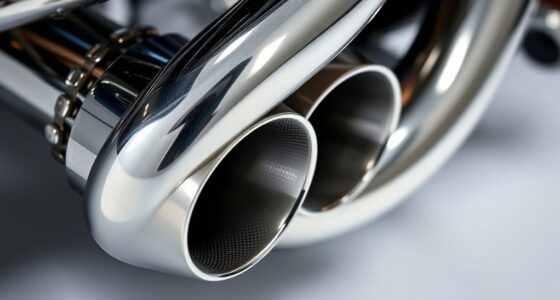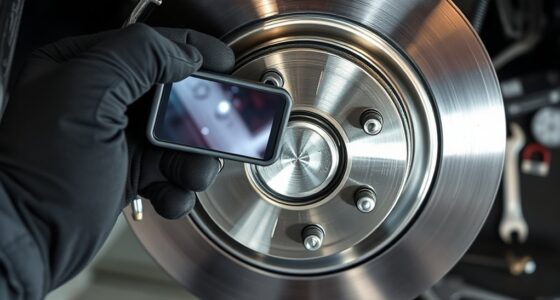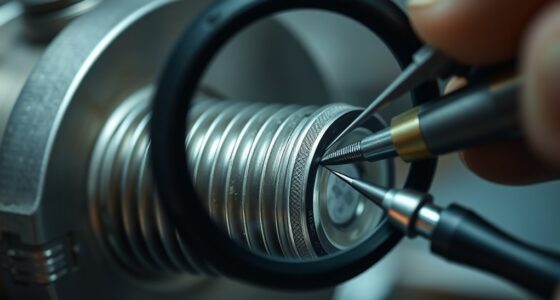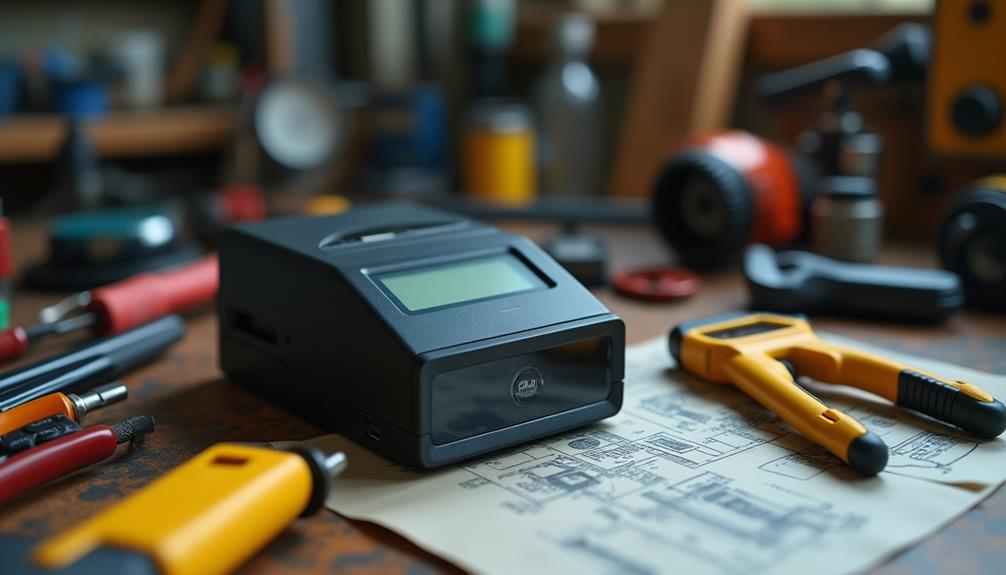When deciding whether to repair or replace an appliance, consider the initial costs, long-term savings, and environmental impact. Repairing can be cheaper upfront but may lead to repeated expenses, while replacing might be costly now but save money over time with energy-efficient models. Think about how long the appliance will last after repairs and its energy use. If you want more guidance, you’ll discover key factors that can help you make the best choice.
Key Takeaways
- Assess repair costs versus replacement costs, including long-term expenses and potential energy savings.
- Consider the appliance’s age, durability, and whether repairs will significantly extend its lifespan.
- Evaluate environmental impact, balancing waste reduction from repairs with energy efficiency of new models.
- Determine if newer, energy-efficient appliances can lower ongoing utility and maintenance costs.
- Make a decision aligned with your long-term financial, environmental goals, and the appliance’s overall condition.

When deciding whether to repair or replace a broken appliance or system, you need to weigh the costs, benefits, and long-term implications. A thorough cost analysis is essential to make an informed choice. Repairing an appliance often seems more affordable initially, but it’s important to consider how long those repairs will last. Will you be fixing it again in a few months? Or will the repair extend its life substantially? Sometimes, investing in a replacement might seem costly upfront, but it can lead to savings down the road through improved efficiency and fewer repairs. Additionally, think about the environmental impact of your decision. Repairing keeps the appliance in use longer, reducing waste and the demand for manufacturing new products. Conversely, replacing might involve disposing of older appliances, which can contribute to landfill overflow and environmental pollution unless properly recycled. It’s worth evaluating whether the newer models are more energy-efficient, as they can lessen your carbon footprint over time.
Cost analysis isn’t just about the repair bill or the price of a new unit; it also includes ongoing expenses. For instance, an outdated refrigerator might consume more electricity than a new, energy-efficient model. Over time, the savings on energy bills can offset the initial investment in a new appliance. For systems like HVAC units or water heaters, consider their lifespan and the costs associated with regular maintenance. Sometimes, investing in a new system with better technology can be more economical in the long run, especially if the current one is nearing the end of its life and requires frequent repairs.
Upgrading appliances can lead to long-term savings through lower energy costs and reduced maintenance needs.
Environmental considerations go beyond just waste. When you repair, you’re reducing the demand for raw materials and lowering the energy used during manufacturing. It’s an eco-friendly approach that aligns with sustainable living. On the other hand, if your appliance is beyond repair or highly inefficient, replacing it with a newer, more environmentally friendly model can be a responsible choice. These newer units often have features that minimize resource use, which benefits both your wallet and the planet.
Ultimately, your decision should balance immediate costs with future savings and environmental impact. Taking the time to analyze repair costs versus replacement expenses, and considering the ecological footprint, helps you make a choice that’s financially sensible and environmentally responsible. Whether you repair or replace, understanding these factors ensures you make a decision that aligns with your long-term goals, both for your household and the planet.
Frequently Asked Questions
How Do Energy Costs Influence Repair or Replacement Decisions?
Energy costs heavily influence your decision to repair or replace. If repairs don’t substantially boost energy savings or improve efficiency, replacing your system with a more cost-efficient model can save you money long-term. Newer appliances often consume less energy, reducing ongoing costs. So, consider the potential for improved cost efficiency and energy savings when weighing whether to repair or replace, ensuring your choice benefits your budget and environment.
What Are the Environmental Impacts of Repairing Versus Replacing?
By repairing, you promote sustainable practices, minimizing waste and maximizing recycling benefits. Replacing often leads to increased energy consumption during manufacturing and disposal, harming the environment. Repairing prolongs product life, reduces resource extraction, and curtails carbon footprints. You help protect our planet by choosing repairs over replacements, supporting eco-friendly choices, and embracing environmentally conscious actions that foster a healthier, more sustainable future for everyone.
How Does Warranty Coverage Affect the Choice to Repair or Replace?
Warranty implications play a big role in your decision to repair or replace. If your item has extensive coverage, repairing it might be more cost-effective and less risky. However, coverage limitations can leave you responsible for expenses, making replacement more appealing if the warranty is nearing expiration or covers only minor issues. You should weigh the remaining warranty period and coverage details carefully to make the best financial choice.
What Are the Safety Considerations in Repairing Older Appliances?
When repairing older appliances, you should prioritize safety by checking for electrical hazards like frayed wiring or loose connections, which could cause shocks or fires. Be cautious of chemical risks from outdated parts, such as refrigerants or cleaning agents that may be hazardous. Always disconnect power before repairs, wear protective gear, and consider professional help if you’re unsure about any safety concern. Your safety is paramount during repairs.
How Does Technological Obsolescence Impact Replacement Decisions?
Technological obsolescence often makes replacement more appealing than repair. As new appliances boast technological updates and feature enhancements, your current unit may no longer meet your needs or offer efficiency. You might find yourself juggling compatibility issues or missing out on smart features. By upgrading, you guarantee safety, energy savings, and modern convenience, making it easier to weigh the cost of new technology against ongoing repairs.
Conclusion
Ultimately, deciding whether to repair or replace comes down to weighing the costs, the age, and the future needs of your item. Consider the longevity you want, the expense you’re willing to invest, and the reliability you expect. Repair to extend, to fix, to save. Replace to upgrade, to modernize, to prevent. By balancing these factors, you’ll make a choice that best suits your situation, ensuring your decision is practical, effective, and right for you.









